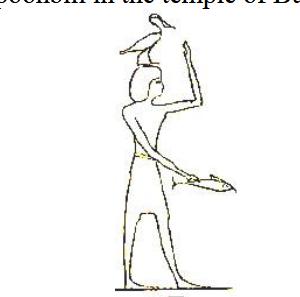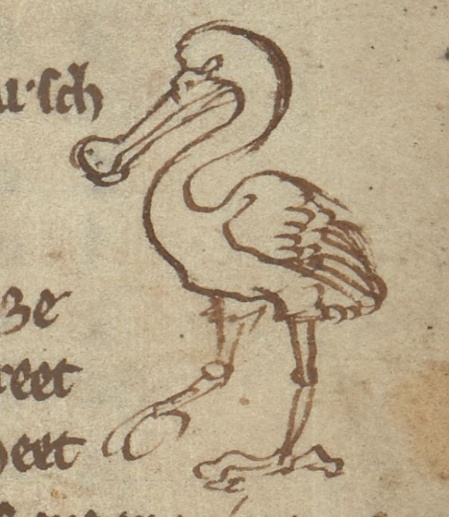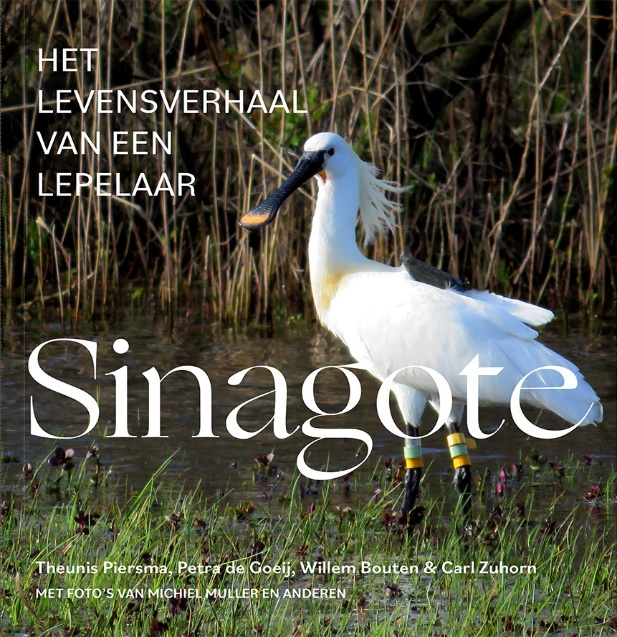Research into (fossil) bone remains of spoonbills shows that the fragmented occurrence of this species in present-day Europe corresponds with the occurrence of this species in the last 10,000 years.
The research used bird bones that were found during archaeological excavations from the periods: prehistory, antiquity, the Middle Ages and early modern times.
The archaeological sites varied in size from Stone Age camps to villages and urban environments, but finds from castles, trading centers, residences or palaces were also used.
The oldest evidence of spoonbills in Europe comes from Hungary and Romania and is around 8000 years old.
In western Europe, in Spain, this is much later, around 4000 to 2000 years ago.
In northern Europe, especially the Netherlands, the first spoonbill remains are found dating from 2000 to 1000 years ago. Then it moves further north to Denmark and England with 1000 to 400 year old remains.
It is likely that the Dutch population has existed for at least 2000 years.1
Spoonbills were also known in ancient Egypt.
The entire bird was often depicted in wall paintings in the Old Kingdom, but they are still unusual compared to other types of birds.
The spoonbill's head is a rare hieroglyph.

Opinions differ as to whether the spoonbill hieroglyphs are used more as a determinative sign or more as a phonetic sign. Often the sign of a spoonbill head refers to bread or cake, so the latter is more likely to be assumed. Much depends of course on the context of the text.
Only one complete spoonbill has been found in hieroglyphic text, in the Unas pyramid from the Fifth Dynasty.

In the temple of Bubastis the spoonbill is depicted on the head of a deity holding a fish in his right hand.

The spoonbill is also found in some medieval encyclopedias. It is described as a bird that steals fish from other seabirds by biting them in the head until they release their fish. Spoonbills eat whole shells and then separate the meat and the shell by the heat in their bellies (in other words, they cook them). They spit out the shells and then eat the meat. (Thomas of Contimpré 1200 -1272).
Pliny the Elder calls them “shoveller-ducks” probably because of the shape of their beaks. 3

In the library of Dutch Literature (DBNL) the spoonbill only appears sporadically.
In the small catechism of nature for children (Martinet 1779) it is classified among the 'birds that live on meat or fruit' together with the eagle, ravens, crows, falcons, sparrowhawks, cranes, owls, woodpeckers, hoopoes and some other birds. But the spoonbill does not fall under the 'birds that fish in our shallow waters and marshes'.
An odd classification, that’s for sure.
In Bird Rhymes, Dutch Baker and Children's Rhymes (Brandts-Buys, Van Vloten-DBNL) the spoonbill only appears together with the stork:
Ooievaar,
Lepelaar,
Takkedief,
The Stork loves little children.
In Frisian this becomes:
Ooiefaar!
Lepelaar!
Prikkedief!
He doesn’t love his father or mother,
a completely different bird all of a sudden.
Only a few mentions of a spoonbill in the entire library of Dutch literature, is of course very little.
Fortunately this has recently been corrected by the publication of the beautiful book Sinagote, the life story of a spoonbill (also available in Spanish and English).
Read that book!

1 Ulrich Schmölke en Kai-Michael Thomsen, Prehistorica land historical occurence and range dynamic of the Eurasian Spoonbill and the White Stork in Europe; Journal of Ornithology, 19 August 2024
2 Spoonbill: A Migrating Bird in Ancient Egyptian Sources, Abdallah Mohammed Diab, International Journal of Heritage, Tourism and Hospitality vol. 17, issue 2, December (2023), 15-25
3 Source: the Medieval Bestiary


